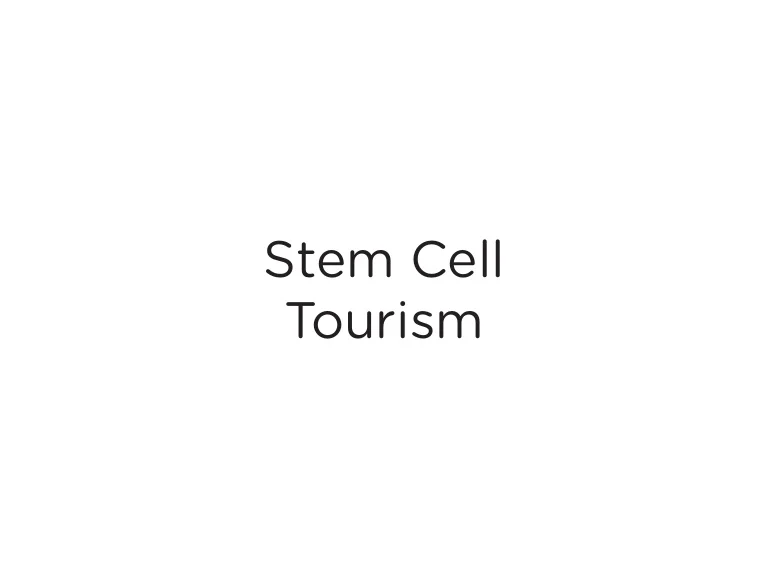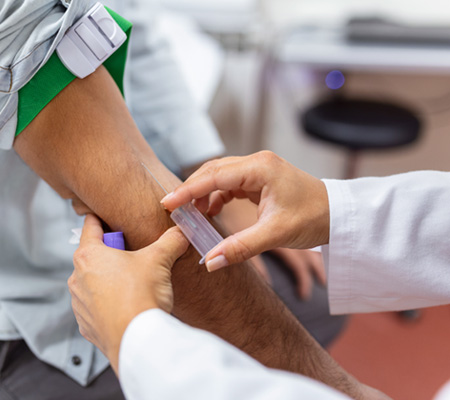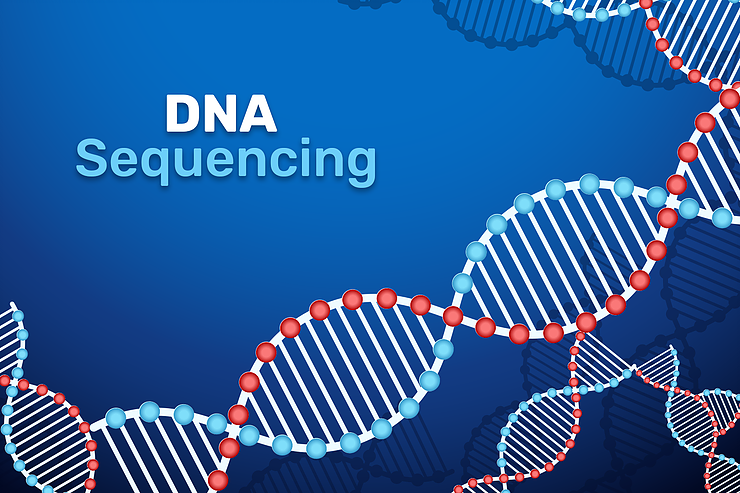Samantha Lyons, Shival Salgaonkar, Gerard T Flaherty
International Health, Volume 14, Issue 2, March 2022
INTRODUCTION
Medical tourism is a global, multibillion dollar industry that facilitates travel to another country with the intent of accessing medical care. This industry is driven by patients seeking available, affordable and timely healthcare that is not always accessible domestically. The expanding media culture, combined with advances in electronic communication and access to low-cost air travel, has fuelled the growth of this industry. Stem cell therapies are emerging as a growing subset of medical tourism activity. The ability of stem cells to differentiate into numerous cell types may play an important role in stimulating the body’s innate repair mechanisms. The promise of restoring function to previously damaged organs and tissues offers exciting therapeutic potential for many health concerns.
The therapeutic potential of stem cell technologies has aroused significant interest in both the lay public and clinicians. Research into using stem cells to treat debilitating conditions that are currently incurable with limited treatment options has focused on multiple sclerosis, anti-ageing, Parkinson’s disease, stroke and spinal cord injury. As these technologies are largely in their infancy, there are significant barriers to the translation of stem cell technology from bench to bedside.
Many factors influence patients in their decision to pursue medical services abroad. These include cost, perceived quality of care, long waiting times, domestic restrictions, inability to participate in clinical trials and lack of access to unapproved treatments. Primarily advertised online, stem cell therapies target a broad spectrum of diseases and disabilities, cosmetic procedures, sports performance enhancement and injury recovery. Recently, in the face of the COVID-19 pandemic, stem cell clinics have begun marketing putative therapies that counter the effects of the virus.
While individual motivations to seek unproven and unregulated therapies may vary, they are underpinned by hope and the desire to exhaust all available options. Many patients pursue these treatments in desperation and when conventional medicine fails to adequately alleviate their symptoms. Although disease-modifying treatments exist for some conditions, patients living with progressive diseases are largely limited to symptomatic therapies. It is not surprising then that patients suffering from serious long-term medical conditions are willing to explore experimental options including stem cell therapies.
Most media coverage is highly optimistic about the therapeutic potential of stem cell therapies while simultaneously forecasting unrealistic timelines for clinical use. Studies have examined the Twitter profiles of stem cell clinics and the content of messages they have posted online and found that the tone of most tweets was unduly positive and that critical discussions of the social and ethical implications of unproven stem cell therapies or their health risks were rarely entertained. While portraying the results of these unproven treatments positively, these media reports often underestimate their risks and sensationalise the preliminary scientific findings. A study of Australian stroke survivors found that most respondents knew very little about the risks and benefits associated with stem cell treatments, with most relying on the media and online advertisements as their primary sources of information. This is problematic because a growing number of interventions are being offered outside of clinical trials and marketed online, where there is little scientific justification for their use.
The reach of social media influencers, athletes and other high profile individuals has generated much attention in the news and on social networks. A recent example is that of the Canadian ice-hockey player, Gordie Howe, who travelled to Mexico following a stroke to receive stem cell treatments. When Howe’s stem cell travel was reported in the news, the public assumed the efficacy of his treatment without acknowledging or considering the lack of scientific evidence and potential risks associated with the procedure. Reports of athletes seeking sports performance enhancement and injury recovery have contributed to the hype surrounding stem cell tourism. This is challenging for patients with debilitating medical conditions because they are especially vulnerable to the influence of success stories and tend to view these apparent favourable outcomes as an indicator that treatments are both safe and effective.
Stem cell clinics that lack accreditation have proliferated worldwide due to weak regulations, bridging the gap between the growing patient demand for unmet medical needs and the potential of medical innovation. While neither scientifically established nor approved clinically, direct-to-consumer offerings of these treatments present scientific, patient and public welfare issues. Protecting patients from expensive, unproven, ineffective and potentially harmful therapies requires legal, ethical and public health oversight.
Stem cell clinics that offer unproven therapies often operate in a regulation vacuum, via regulatory loopholes, or in violation of existing regulatory standards. While the administration of these unproven therapies occurs globally, most involve LMICs such as India, Thailand, Mexico and the Dominican Republic. This is attributable primarily to the ease of travel and globalisation, which enables patients to circumvent local restrictions. The increasing use of unproven stem cell therapies has created an urgent need for universal agreement between national and international bodies over the commercialisation of medical practices and products.
While some countries have implemented regulations to curb stem cell tourism, many have inadvertently created loopholes whereby the regulations leave room for varied interpretation. These clinics may then exploit these loopholes and offer unproven and risky treatments directly to patients. In the USA, stem cell products are regulated by the Food and Drug Administration (FDA). In order to circumvent the rigorous regulatory approval process mandated by the FDA, many clinics have classified their stem cell therapies as human cellular and tissue-based products (HCT/P) rather than as biological drugs, because HCT/Ps that are minimally manipulated and intended for homologous use are not subject to FDA regulations. This vague language created a loophole for US clinics to exploit in the early 2000s. In 2014, the FDA updated their regulations by clarifying the meaning of the terms ‘minimal manipulation’ and ‘homologous use’ to reduce the areas of uncertainty that arose within the regulations.
Another legislative challenge is the lack of harmonised regulatory schemes across the world. The legal divergences between countries in relation to codes of conduct, practice or ethics, as well as the enforcement patterns and bounds of a disciplinary authority, enable clinics to evade regulatory oversight. The concern is that these jurisdictional variations create a platform by which clinics can seek out the most lenient regulatory environment. In Japan, if early phase trials show promise of safety and efficacy, clinics can advertise regenerative medicine therapies for up to 7 y without demonstrating ongoing treatment effectiveness. The goal of this strategy appears to be the expedited commercialisation of stem cell products that will help to encourage future investment in the field of regenerative medicine. This has created a multinational research market whereby clinics can relocate their operations or clinical trials to less-regulated jurisdictions.
In an attempt to distance the scientific community and stem cell research from clinics offering unproven and unregulated stem cell-based interventions, the International Society for Stem Cell Research (ISSCR) has developed guidelines that seek to promote rigour, oversight and transparency in all areas of practice. They caution patients against use of fraudulent stem cell therapies and recommend patients only to undergo procedures that have been registered with the FDA or European Medicines Agency. Unregulated and unproven practices undermine the credibility and validity of legitimate stem cell research and threaten to compromise the future development of the field. Furthermore, participation in unregulated stem cell treatments may deem patients ineligible for future enrolment in approved stem cell clinical trials, should these become available. Fundamentally, stem cell tourism may indirectly hinder the progression and advancement of stem cell science.
Conclusions
Stem cell technologies are often associated with inflated expectations of their therapeutic potential. While this has fostered substantial financial support for legitimate stem cell research, significant challenges remain in their translation from bench to bedside. Frustrated by apparently slow progress in the field, patients with debilitating and terminal conditions have begun pursuing alternative options that are neither approved clinically nor appropriately regulated. While regenerative medicine offers significant therapeutic potential, measures need to be put in place to ensure patient safety. Physicians, researchers, scientists, regulatory bodies and advocacy groups are encouraged to work together to improve patient and physician education and address current legislative deficiencies. As stem cell research is still largely in its infancy, it will be interesting to observe if COVID-19 will have an impact on stem cell tourism as it continues to restrict travel across international borders.




